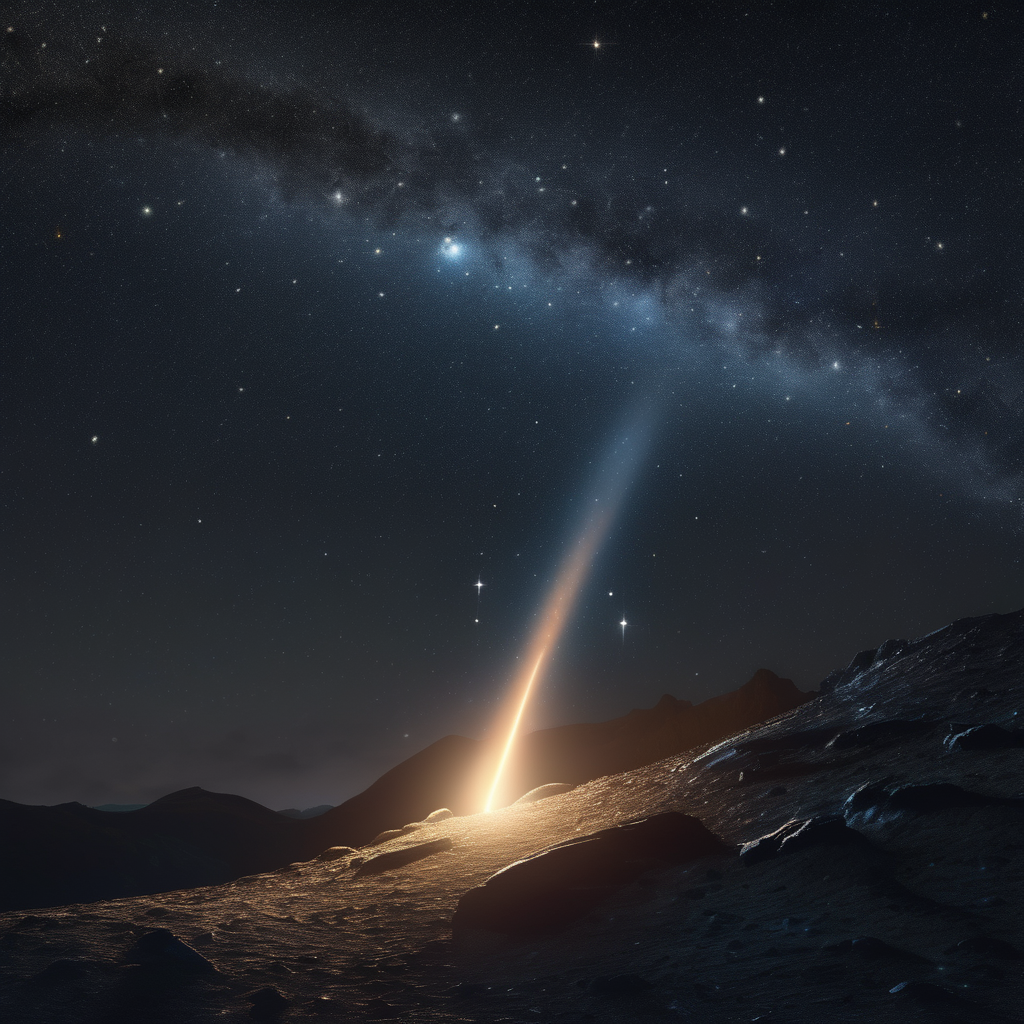An intriguing interstellar comet, known as Comet 3I/ATLAS, has taken center stage in the astronomical community following its brief visit to our solar system this year. According to NASA, this comet is the third interstellar object recorded to pass through our solar neighborhood, following the discoveries of 1I/’Oumuamua in 2017 and 2I/Borisov in 2019.
Comet 3I/ATLAS was initially detected on July 1, 2025, by the ATLAS (Asteroid Terrestrial-impact Last Alert System) survey telescope situated in Rio Hurtado, Chile. Remarkably, upon examining previous observations, astronomers found that the comet had actually been visible as far back as June 14. Via observations from the Hubble Telescope, scientists determined that the nucleus of the comet measures between 1,444 feet and 3.5 miles in diameter.
The classification of this cosmic wanderer as a comet is due to its icy composition and the presence of a bright cloud of gas and dust surrounding it, known as a coma. This phenomenon occurs as the comet approaches the sun, causing its icy materials to vaporize and create a distinctive fuzzy appearance or tail. Notably, it is speculated that Comet 3I/ATLAS may have originated billions of years ago, potentially predating our solar system.
The nomenclature “3I/ATLAS” signifies its status as the third interstellar object recognized within our solar system, while “ATLAS” denotes the survey responsible for its discovery. The comet’s hyperbolic trajectory indicates that it is not bound by the sun’s gravitational pull, allowing it to travel at around 137,000 miles per hour, well beyond what would be needed for it to remain in orbit.
Fortunately for Earth, Comet 3I/ATLAS poses no threat. NASA confirms that it will not come closer than 170 million miles to our planet. The comet is approaching the sun, with its closest approach scheduled for October 30, where it will travel just inside the orbit of Mars. By early December, it will be on the opposite side of the sun, making it invisible without the aid of a telescope.
The scientific community values interstellar objects like 3I/ATLAS for their potential to serve as cosmic time capsules. They could provide insights into the chemical and physical conditions of other star systems formed billions of years ago. Astronomers have identified unexpected atomic nickel vapor emanating from the comet, even at considerable distances from the sun—approximately four times Earth’s distance—where temperatures are extremely low. This discovery raises intriguing questions about the nickel’s vaporization and suggests it may be interacting with carbon monoxide or other organic compounds, which could facilitate the release of nickel atoms at far lower temperatures than expected.
The exploration of Comet 3I/ATLAS underscores humanity’s ongoing quest for knowledge beyond our solar system, revealing the mysteries that interstellar visitors can impart to science and inspiring curiosity about the cosmos.
